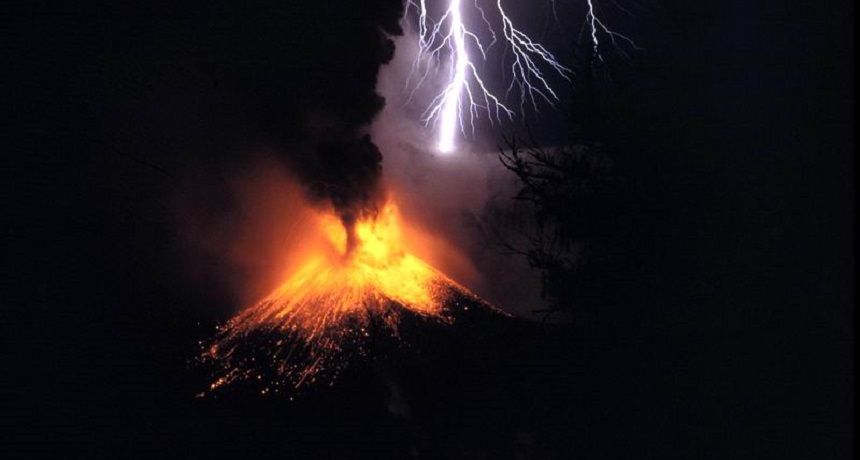|
Getting your Trinity Audio player ready...
|

Lightning bolts often flash and crash high above erupting volcanoes. But those fireworks can provide more than a dramatic light show, new data show. They can transform flying ash into glass.
The finding could explain very tiny glass beads often found amidst deposits of volcanic ash. Researchers shared their discovery online February 27 in the journal Geology.
A volcanic eruption can kick material high into the atmosphere. Because much of it can be electrically charged, this material can spark lightning bolts. That lightning can heat the nearby air to more than 3,000° Celsius (more than 5,400° Fahrenheit). That’s easily hot enough to melt any debris in the air. If that material then quickly cools, it can become glass.
The idea isn’t surprising. Scientists have long known about fulgurites. These are glassy deposits that form in rocks and sediments when the ground is struck by lightning.
Volcanologist Kimberly Genareau works at the University of Alabama in Tuscaloosa. She was part of a team that sifted through ash deposits from two volcanic eruptions. One occurred in 2009 at Mount Redoubt in Alaska. The other took place a year later at Eyjafjallajökull in Iceland. At each site, the ash contained microscopic glass balls.
Back in the lab, the researchers mimicked the conditions above erupting volcanoes. To do this, they exposed ash-like material to with strong electric discharges — artificial lightning. Again, they found the glass balls. Those created in the lab averaged 17 micrometers (670 millionths of an inch) wide. The naturally occurring balls had been bigger — 48 micrometers wide, on average.
As much as 5 percent of the volcanic ash had been reformed into glass, the researchers now estimate. This conversion of ragged rocky bits to smooth, aerodynamic glass would cause the volcanic debris to fall faster, the researchers point out. It also would make that debris less likely to clump.







